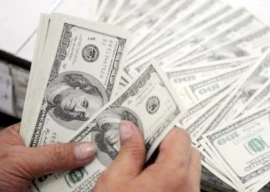
The external sector has started to worry policymakers a great deal. From July to November 2021, the current account deficit touched 5.3% of gross domestic product (GDP) owing to a very high trade deficit.
Although exports grew around 29%, the import growth of 64% again revealed the structural weakness in the economy. It also implies that the industrial structure is poor and not aligned with the world pattern of wants.
The economy continues to produce those goods which have low level of demand in other countries. On the contrary, the inelastic demand for imports contributed to the higher import growth.
Although there is a modest growth in remittances, yet they are unable to reduce the current account deficit. In addition, the statistics of foreign direct investment (FDI) and foreign portfolio investment (FPI) are either negligible or negative during July-November 2021.
Under these set of circumstances, the gross financing increases a great deal, which covers debt servicing of the existing debt along with the new one.
When the exportable surplus is low and remittances are unable to finance imports, the government is bound to contract new loans. This also shows there is balance of payments (BOP) constraint and the Asian Development Bank (ADB) reported in 2019 that the economy faces this constraint at 3.8% level of GDP.
Whenever the GDP grows above 3.8%, the economy will start facing financial problem. The financial problem is manifested through a reduction in foreign exchange reserves under a fixed exchange rate regime.
If the policymakers intend to adopt a flexible exchange rate regime, the manifestation is through the devaluation of rupee vis-a-vis dollar.
By devaluing the rupee, the State Bank of Pakistan (SBP) can minimise the fall of foreign exchange reserves and that is the reason the reserves are still hovering around $18 billion despite a large current account deficit-to-GDP ratio.
The SBP increased the policy rate in quick successions to slow down the economy, which happened in 2019. This was done under the International Monetary Fund (IMF) programme as the political government assumed office in 2018 and it could afford to slow the economy down and face the pressure from the masses.
Since the government intends to grow the economy above the level of 3.8% of GDP in its fourth year in office, it does not want to raise the policy rate in quick successions. Therefore, it gradually started to raise the policy rate in September 2021 and allowed the rupee to depreciate, though the SBP occasionally intervened in the inter-bank market.
In addition, it has been announced that the policy rate will gradually be adjusted in the coming months.
The economy is facing the impact of a flexible rupee in the form of imported inflation, which is in double digits. The impact will be felt in the coming months, though international commodity prices have subsided to some extent.
The impact of depreciation will come with a lag and it will further slow the economy.
Although the absolute export statistics have increased to some extent, the exportable surplus is still low.
In the presence of a low exportable surplus, policies to pump up exports will create food shortages in the economy and these shortages accelerate food inflation. Such shortages are covered through the import of wheat, sugar and palm oil.
The rising food-related imports have also contributed to food inflation in the last couple of years.
In short, the current economic phase could be characterised as slumpflation due to structural constraints, where output remains stagnant and the general price level accelerates. The current policy of demand suppression will add to the woes under this situation.
The writer is the Assistant Professor of Economics at SDSB, Lahore University of Management Sciences (LUMS)
Published in The Express Tribune, December 27th, 2021.
Like Business on Facebook, follow @TribuneBiz on Twitter to stay informed and join in the conversation.




1731916090-0/sabrina-(3)1731916090-0-165x106.webp)













COMMENTS
Comments are moderated and generally will be posted if they are on-topic and not abusive.
For more information, please see our Comments FAQ